This month marks what would be, in normal times, the start of the Paris tourist season. The British half-term, the American spring vacation, the German winter break, all happen close to now. Chinese and Japanese tour groups arrive too, as the weather warms and the sun reappears.
The visitors flock to the same place: The Champ de Mars. The former military drilling ground is home to the Eiffel Tower at its north end. For reasons not clear to me or most Parisians, tourists love to stand in line there for hours, then pay up to $30 to take an elevator to the top and look out over the city.
Now, the tower is closed because of the pandemic, and France’s borders are basically shut to non-Europeans. The Champ de Mars is sparsely populated. Even the pickpockets have disappeared. The brand new entrance to the tower, constructed over several years and no doubt at great expense, is deserted.
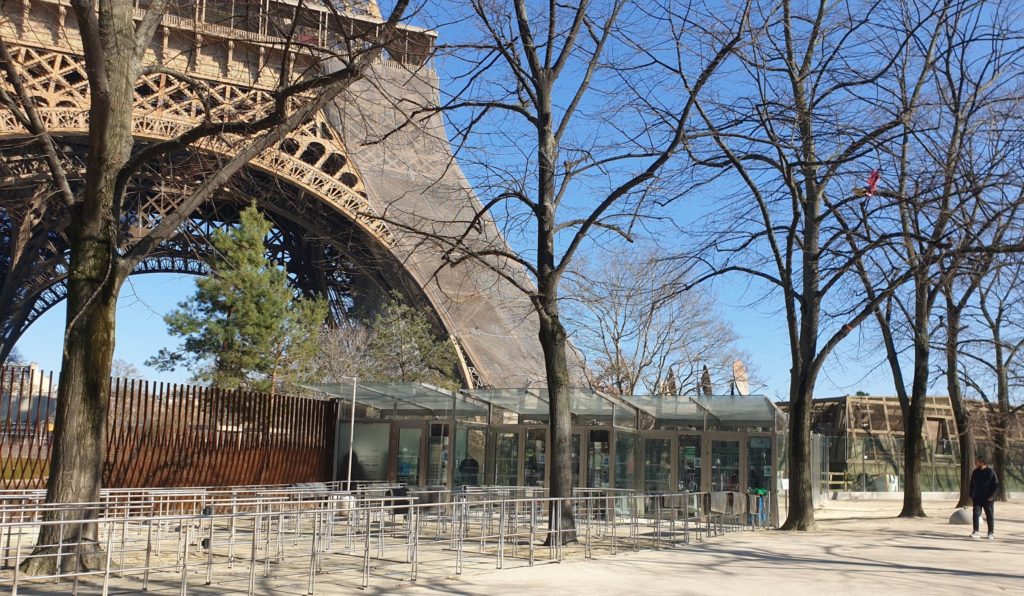
The park is a place of nostalgia for me and my family. We lived near it in our first few years in the city, on the avenue de Tourville; the kids were in elementary school. When friends in the U.S. asked if I missed having a backyard, I’d respond that we did have one, 60 acres’ worth. We just had to walk five minutes to get there.
Henry practiced soccer with his friends on the sandy open spaces (the grass was forbidden, of course) and Louise loved the pony ride. We all rode bikes there.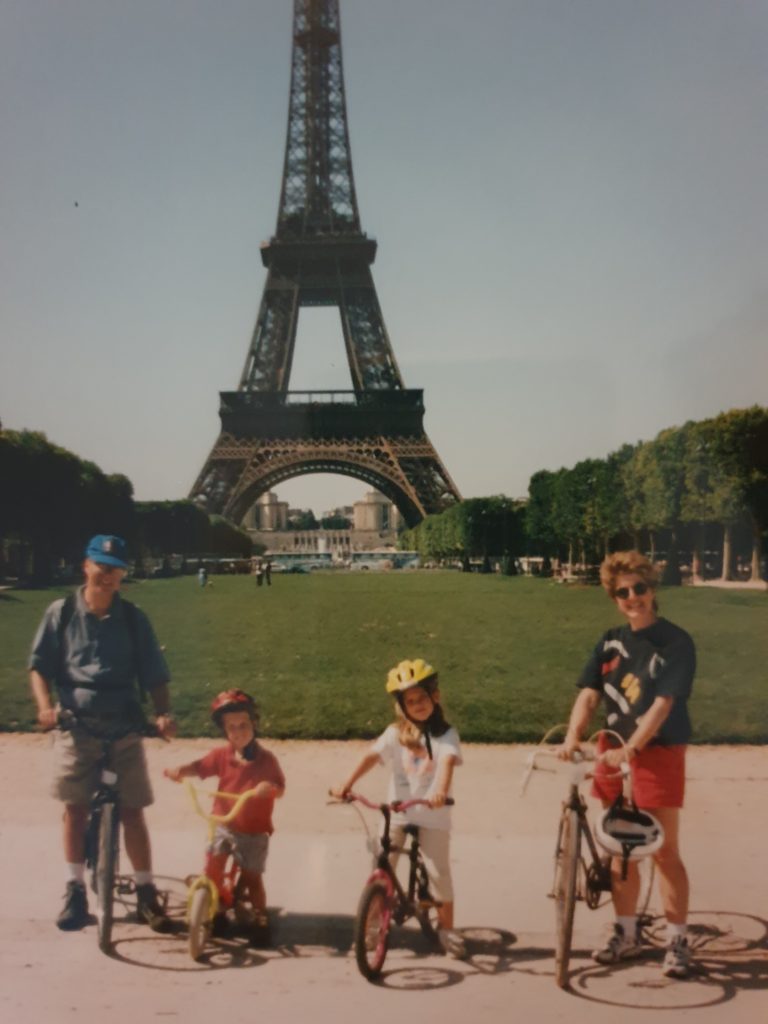
With that history in mind, I visited our former family playground on a recent sunny Sunday and found a Champ de Mars I’d never seen before. You can argue that tourists aren’t great additions to the Paris ambiance, but the place seemed kind of empty without them. And I felt bad for the handful of remaining souvenir vendors, who used to offer their wares to thousands of visitors every day.
“No sales,” said Abdul, standing in front of the hats and T-shirts he was displaying on a white blanket. In normal times, there would have been dozens like him lining the path from the Métro entrance to the ticket office. It was a team operation in those days: Someone would keep watch for patrolling cops and sound the alarm if any appeared. The vendors would pick up all four corners of their blankets and dash away, returning as soon as the coast was clear.
No police now, but no customers, either, and fewer sellers. Abdul said many of his former competitors had gone back to their home countries, or to Italy. (Why Italy? I should have asked, though I see that the Roman Colosseum and the Forum have just reopened.) Was the sunny day bringing any buyers out here? I asked. “It’s very bad all the time,” he said.

I found the same phenomenon in the southern portion of the Champ de Mars, where the activities are designed more for children, including locals. The Guignols, a Punch-and-Judy-type show that involves a lot of violence while children scream in delight, was closed indefinitely. A sign inside explained why.
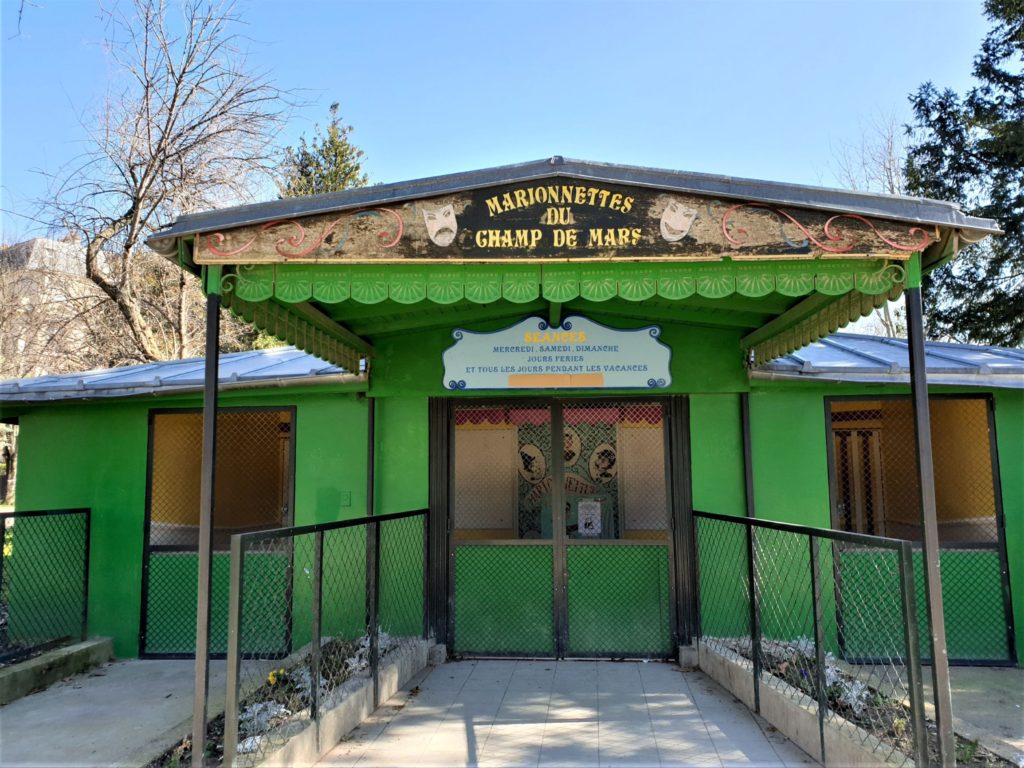
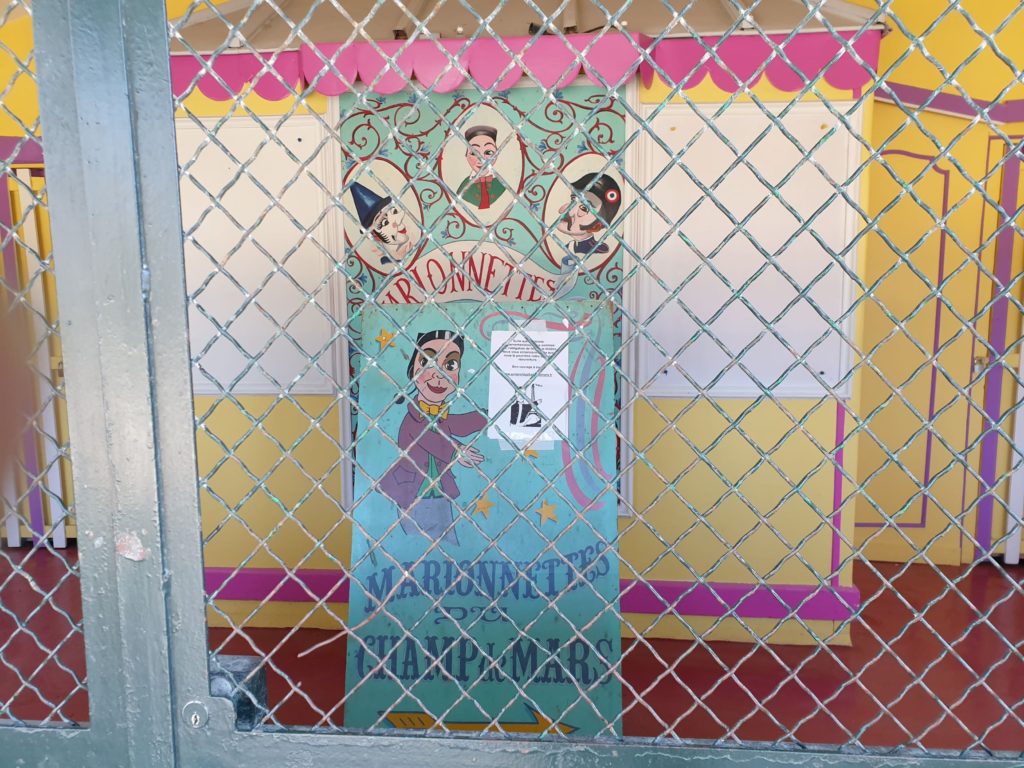
The pony ride was still operating, and the ponies were dutifully carrying a few children around the park. Saïd, the proprietor, told me that his business was suffering not only from the lack of tourists on the Champ de Mars but from the cancellation of church fairs and school festivals that used to hire him. He had seven ponies and donkeys with him, less than usual, and only four went out on the ride I saw.
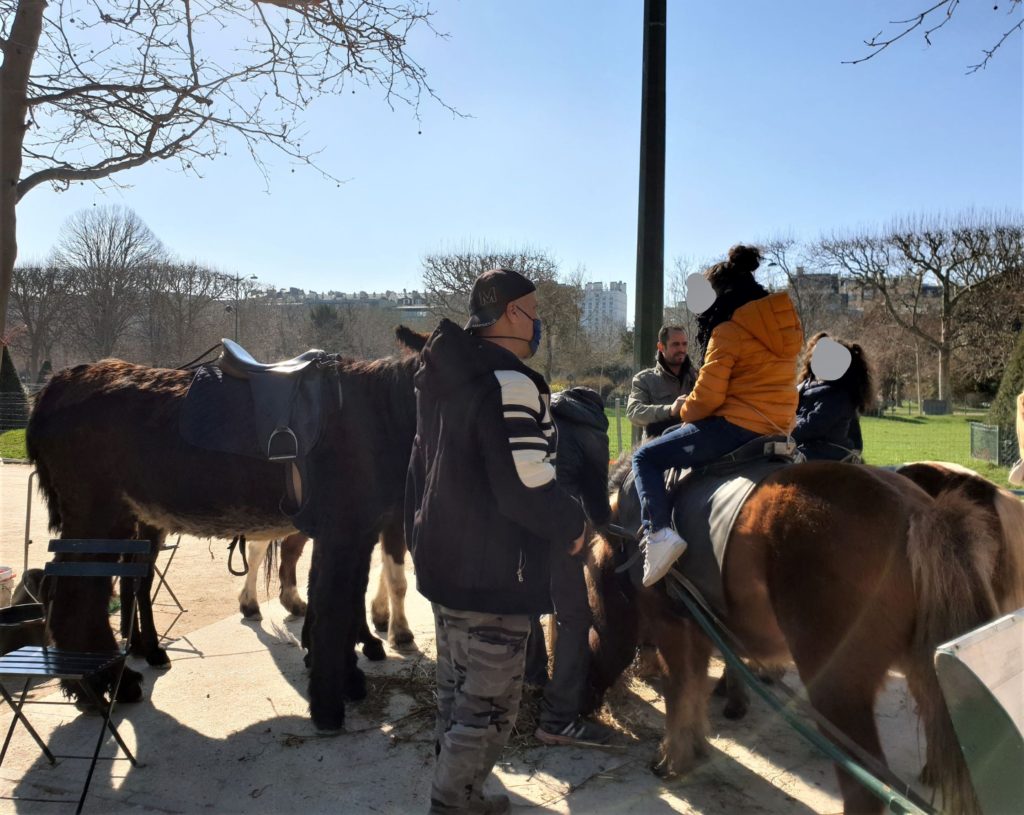
Still, he said proudly, “We’ve been here forever.” His business dates back to 1899, and even the cart the ponies pulled was 90 years old, he said. Like other small businesses, he was getting government aid that helped him stay afloat.
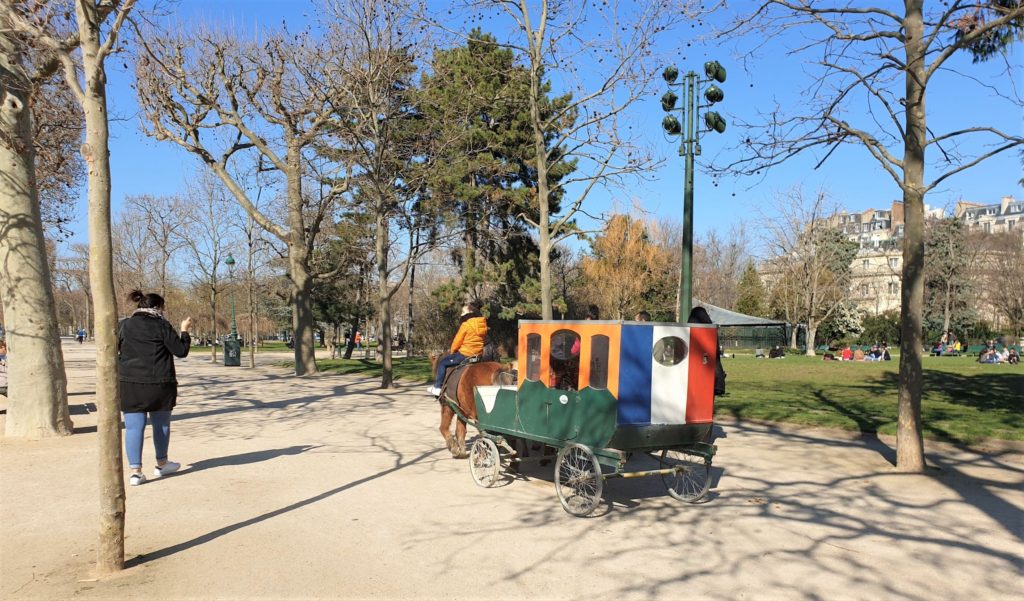
Twenty years ago, my son Henry’s favorite pastime in his “backyard” was the kid-cart ride. On a weekend day, he would wait in line as long as necessary to have the chance to scoot around in a big oval, dodging the many other carts. His parents, after tucking the ticket money into his pocket, would hang around with their friends and chat.
Few customers were scooting when I visited.
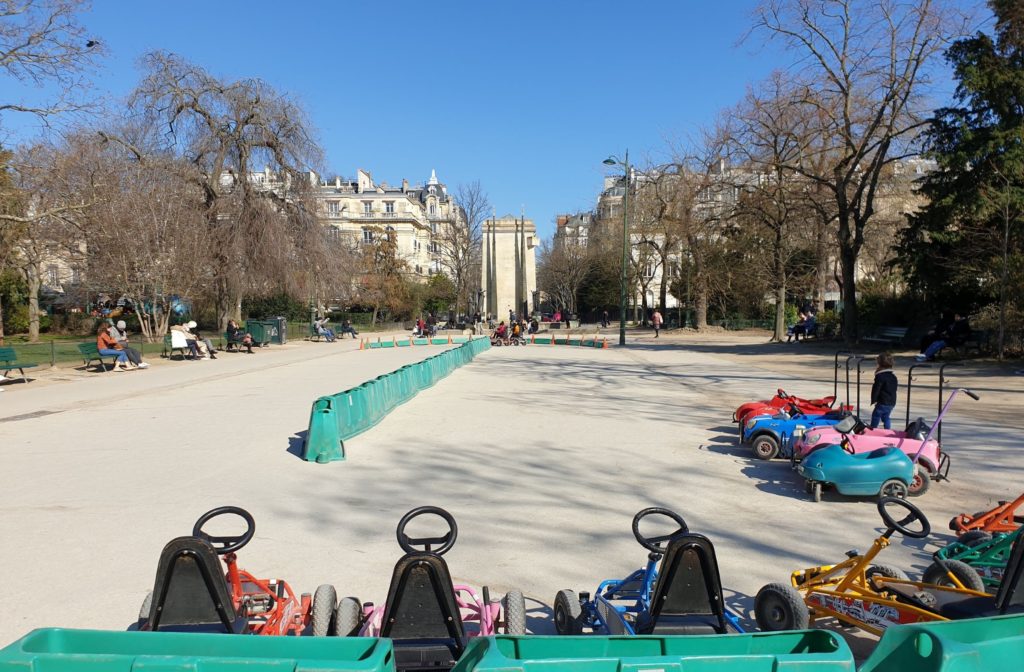
Mikaël, the owner, wasn’t too pessimistic. “At least we get to work,” he said while eating his lunchtime sandwich, noting that restaurants and bars have been closed to inside dining since October. At France’s pathetically slow pace of vaccinations, that’s not likely to change soon.
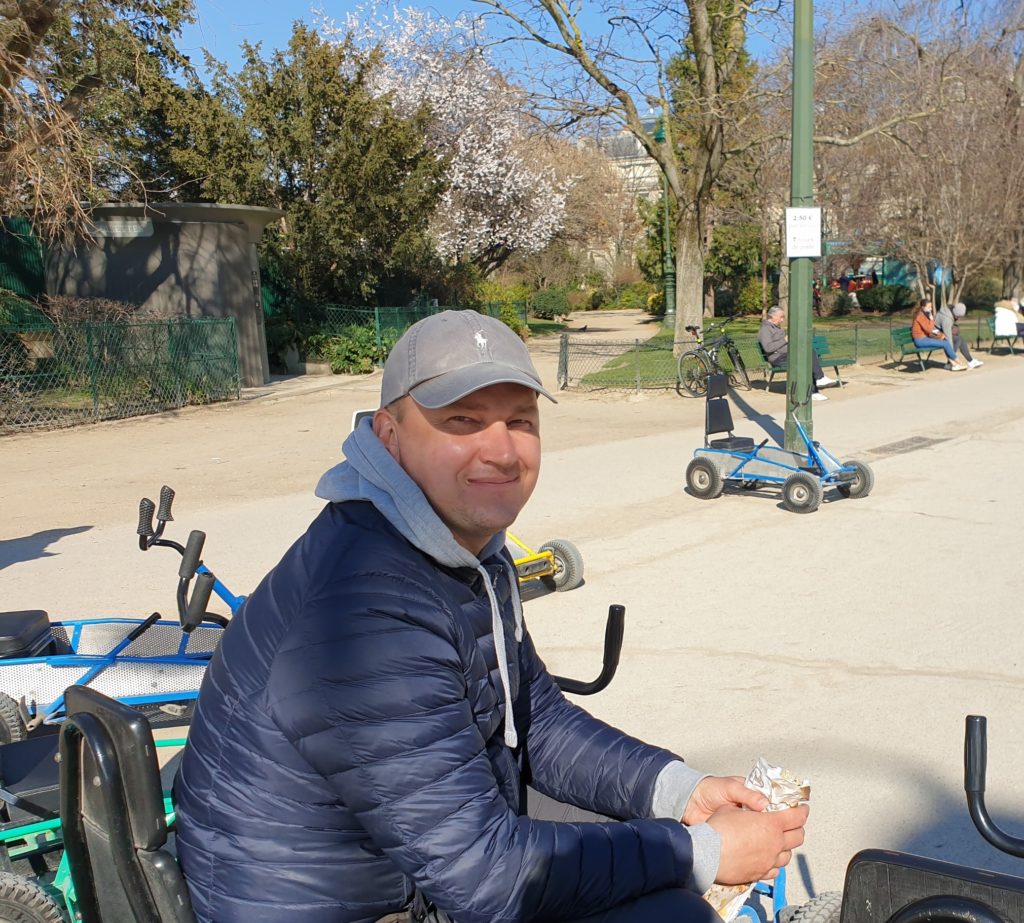
There was one happy sight: Parisians rediscovering the Champ de Mars. The gardens along the sides were filled with picknickers, and the spring flowers were starting to sprout.
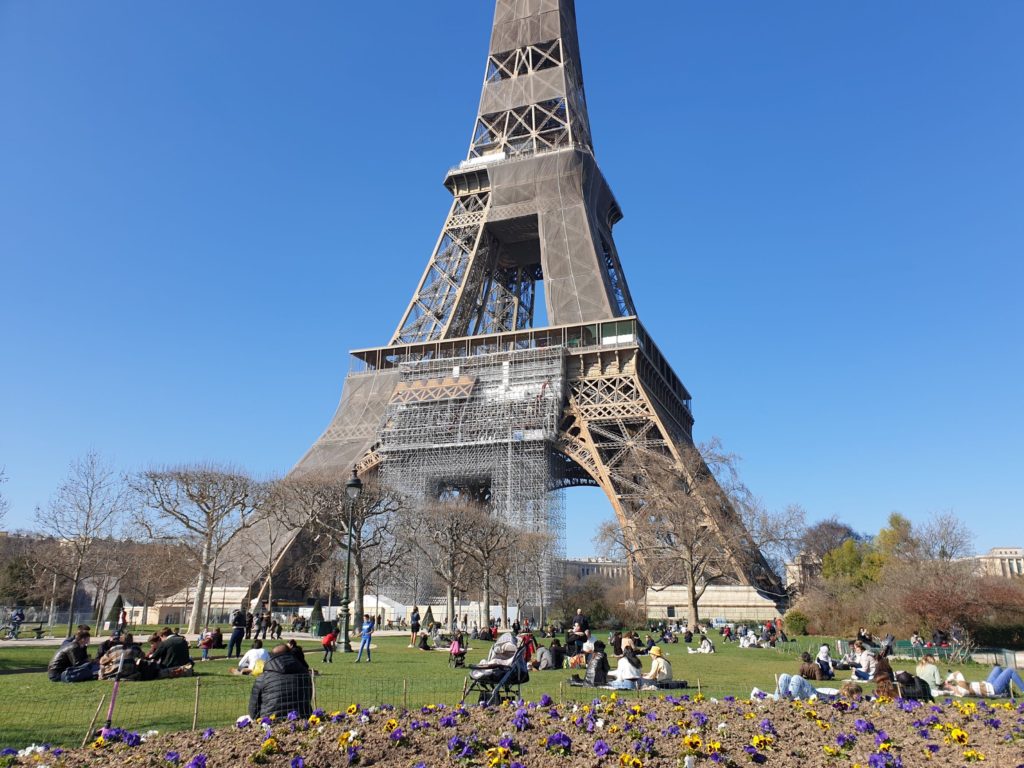
As long as people can get home by the 6 p.m. curfew, it’s a great way to enjoy a place that’s usually unpleasantly clogged. And this may have been the last weekend for a while to enjoy it: Paris is one of the cities being considered for local lockdowns as soon as this week.
